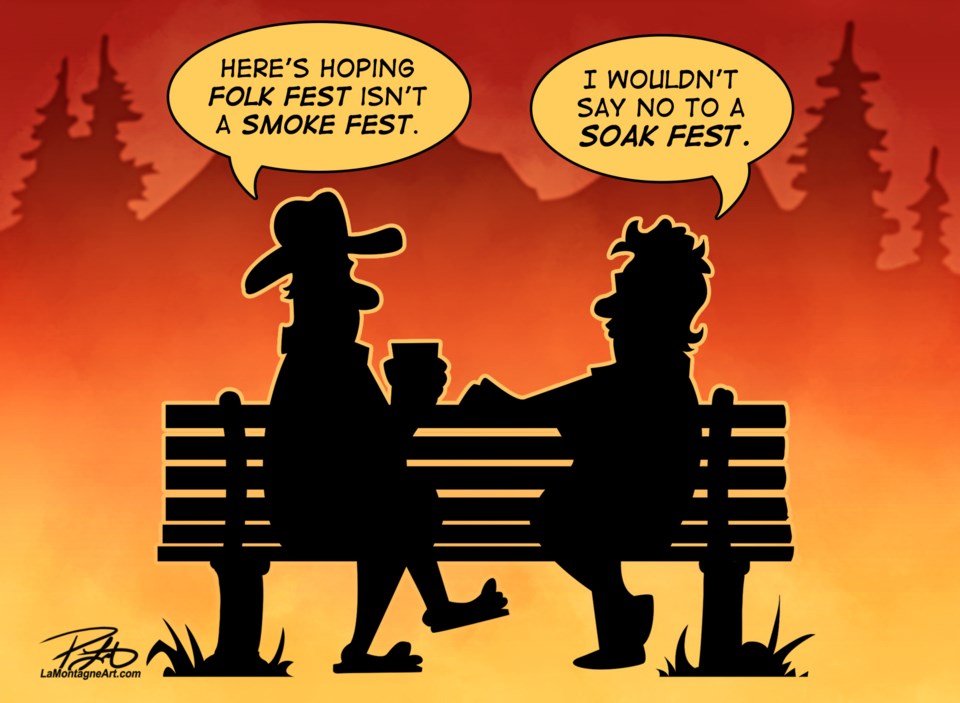Wildfire damage poses a major threat to many communities in western Canada. This is not a new notion to those living in the Bow Valley, nor are those concerns taken lightly.
Though stress and sadness of what is happening in recent and heartbreaking events from around the province, and last year across western Canada, there is a sense of gratefulness for many coming to aid in a time of need.
From emergency responders – such as firefighters, helicopter pilots and police – to local residents and organizations lending a donation, a place to stay and other vital services and information, the Outlook would like to extend its gratitude to those making a difference.
Wildfires in Jasper, Kootenay, the MD of Bighorn and just outside boundary of Kootenay National Park have forced evacuations in the past week-and-a-half, and other fires such as last week’s blaze north of Lake Louise and earlier this week in Kananaskis Country – both of which are considered extinguished or under control – have caused many to be on pins-and-needles.
It’s no surprise a wildfire raging through Canmore was identified as the top-ranked threat by the Town’s emergency management hazard identification and risk assessment.
With wildfire danger at extreme levels, planning is underway for a large-scale fireguard to protect Canmore and adjacent hamlets of Dead Man’s Flats and Harvie Heights from a future blaze. That means creating a type of barrier around the communities by logging, thinning and prescribed burning.
Parks Canada is creating fireguards similarly in Banff National Park.
In Jasper, its decades worth of fire prevention safety, including fireguards, is being praised as a major reason for the protection of the majority of the town that caught fire last week.
On the night of July 22, residents and visitors of Jasper National Park began evacuating in the pitch of dark as ash fell from the sky. They rushed to vehicles and were bumper-to-bumper on the only road out of the area lighting up with ominous red flames.
As more first-hand accounts from the event start emerging, such as on the Outlook’s page A6-7 story this week, an ordinary summer evening turned into a scene out of a disaster movie.
Many left behind jobs, homes and possessions to quickly escape the raging wildfires approaching. Within five days, 30 per cent of infrastructure – mostly residential and businesses – had been destroyed and the Municipality of Jasper revealed a map of where the most damage in town had occurred. No injuries or fatalities have been reported.
It’s highly recommended that people build a 72-hour emergency kit, complete with food, water and government documents.
The latest calculations expect it will be weeks at minimum until residents are able to return to their lives and times of uncertainty.
The Bow Valley is unique with its own set of characteristics and issues, though, we do face similar challenges with our neighbours in Jasper, with one of the biggest being wildfire danger.
In the past few days, hundreds of firefighters and incident management personnel from across the country and around the world have joined the fight against the huge blazes that are raging through Alberta. Internationally, they've come from Australia, Mexico, USA and South Africa.
Grateful for them here battling the fires shoulder-to-shoulder with Canadian first responders. However, with experts expecting major wildfires to be the new normal, it's stressful that the expectation being moulded in minds moving forward of the magnificent national parks isn't of its striking beauty, but of smoke and ash and flame.




